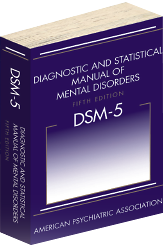 It’s no secret that many teens are big fans of video games and the Internet. But internet addiction is not just a problem for teens. I have been seeing this problem since the 1990s, when parents would complain that they couldn’t get their kids to look up from their phones long enough to share a meal. Today, I often hear the same complaint from kids regarding their parents!
It’s no secret that many teens are big fans of video games and the Internet. But internet addiction is not just a problem for teens. I have been seeing this problem since the 1990s, when parents would complain that they couldn’t get their kids to look up from their phones long enough to share a meal. Today, I often hear the same complaint from kids regarding their parents!
Of course, most addictions start in the teen years; a critical window of vulnerability to substance use disorders. The teen brain is still developing and malleable, and some brain areas are less mature than others. The parts of the brain that process feelings of reward and pain—crucial drivers of drug use—are the first to mature during childhood. What remains incompletely developed during the teen years is the prefrontal cortex and its connections to other brain regions. The prefrontal cortex is responsible for assessing situations, making sound decisions, and controlling our emotions and impulses; typically this circuitry is not mature until a person is in his or her mid-20s
 Internet addiction is not an “official” diagnosis, though it seems to be a growing problem. Because it isn’t in “the book,” we know little about its prevalence here in the United States. In Asia, however, therapists are taught to screen for it. South Korea considers Internet addiction one of its most serious public health issues, with estimates of approximately 2.1% of Korean children ages 6–19. An estimated 13.7% of Chinese adolescent Internet users meet Internet addiction diagnostic criteria! . As a result, in 2007 China began restricting computer game use; current laws now discourage more than 3 hours of daily game use.
Internet addiction is not an “official” diagnosis, though it seems to be a growing problem. Because it isn’t in “the book,” we know little about its prevalence here in the United States. In Asia, however, therapists are taught to screen for it. South Korea considers Internet addiction one of its most serious public health issues, with estimates of approximately 2.1% of Korean children ages 6–19. An estimated 13.7% of Chinese adolescent Internet users meet Internet addiction diagnostic criteria! . As a result, in 2007 China began restricting computer game use; current laws now discourage more than 3 hours of daily game use.
About 86% of Internet addiction cases have some other DSM-IV diagnosis present. Here in the United States, patients generally present only for those “comorbid” conditions, such as ADHD, Depression, Social or Generalized Anxiety Disorder, or hostility Thus, unless the therapist is specifically looking for Internet addiction, it is unlikely to be detected . Unfortunately, Internet addiction is resistant to treatment, entails significant risks, and has high relapse rates. Moreover, it also makes comorbid disorders less responsive to therapy. That is, it is more difficult to treat a teen or adult for other mental health disorders if they are also Internet addicts.
Causes of Internet Addiction
As is the case with other compulsive behavior disorders, no one cause has been identified as definitively leading to teen Internet addiction.
As noted above, teen Internet addiction is more prevalent among teens who are also struggling with disorders such as Depression, Attention Deficit Hyperactivity Disorder (ADHD), anxiety, poor self-image, and low self-esteem. For teens who are struggling with other mental health or behavioral challenges, and who have difficulty with “real life” social situations) the power, sense of community, and adrenaline rush of online gaming can be extremely enticing.
Teens who become enamored with online MMORPGs (massively multiplayer online roleplaying games) such as World of Warcraft and Everquest, the likelihood of addiction may be greater because these games never end, but are endlessly reinforcing. With new quests and adventures continually being added to the game, the user never reaches a point where the game has been mastered or otherwise completed — thus, there is always the enticement to return for more. For those who are at risk of developing teen Internet addiction, the rush of playing triggers a release of endorphins (brain chemicals associated with pleasure) that mimics what occurs in the brains of individuals who are addicted to alcohol and other drugs, or to behaviors such as gambling. These games, then, are designed to be addictive!
Symptoms of An Internet Addiction
The core components of teen Internet addiction are similar to those of any other addiction or compulsion. Young people who struggle with teen Internet addiction are likely to meet many if not all of the following criteria:
- Tolerance — Needing to play more and more in order to experience the same “rush”
- Obsession — Spending most offline time thinking about past online experiences and planning for future online sessions
- Frustration, anxiety, and/or irritability when not able to go online
- Abandoning friends and other hobbies in order to focus on online activities
- Continuing to spend time online even after negative repercussions, such as school problems, deteriorating relationships, and even health problems
The following are among the specific signs that could indicate the presence of teen Internet addiction:
- Most non-school hours are spent on the computer or playing video games
- Falling asleep in school
- Worsening grades
- Choosing to use the computer or play video games, rather than see friends
- Dropping out of other social groups (clubs or sports)
- Being irritable when not playing a video game or being on the computer
- Staying online longer than originally planned once a session starts.
- Internet use increases over time in order to achieve the same level of satisfaction with the experience.
- Preoccupation with the Internet when not online; thinking about the last session or what will happen during the next one in between Internet usage.
- Inability to control or cut back on Internet use.
- Missed work, school or family activities in order to go online or continue using the Internet.
- Lying to family members or a therapist about the amount of time being spent online.
- Going online in order to escape from feelings of depression, anxiety, guilt or hopelessness
Physical symptoms associated with Internet addiction may include the following:
- Carpal tunnel syndrome (associated with repetitive motions such as excessive keyboard use)
- Insomnia
- Poor nutrition (failing or refusing to eat in order to remain online)
- Poor personal hygiene (again, neglecting this important issue in order to focus on online activities)
- Headaches, back pain, and neck pain
- Dry eyes and vision problems
In short, if a teen demonstrates an inability to stop spending time online — or cannot limit his or er time on the Internet — especially when Internet use is creating problems in other areas of his/her life, then teen Internet addiction may be to blame.
Treatment for An Internet Addiction
Determining the optimal course of treatment for a young person who is struggling with Internet addiction depends upon a range of factors, including age, the nature and severity of the compulsive behavior, and the presence of co-occurring disorders. Some teens may respond best to outpatient therapy (such as weekly sessions with a counselor or therapist), while others may be best served by enrollment in a therapeutic teen wilderness program or a residential program for teens. Internet addiction differs from some other types of addiction in that some level of Internet use is generally necessary for function in society. Thus, the goal of treatment is usually not complete abstinence. However, when a person is addicted to online porn, for example, treatment goals may involve using the Internet without attempting to seek out pornography.
Cognitive behavioral therapy, self-help treatment groups, group therapy, and family therapy have all been shown to be effective methods for the treatment of Internet addiction. Dr. Kimberly Young, who founded The Center for Internet Addiction in 1995, developed a specialized form of cognitive behavioral therapy to treat Internet addiction, CBT-IA.
Twelve-step programs and social skills training may also be treatment options for some individuals. When a mental health concern such as stress, depression, or anxiety has led a person to turn to the Internet for support, a therapist may work to treat the addiction by first addressing this mental health condition. Similarly, any other underlying conditions are often exposed through work in therapy, and treating these concerns can often help facilitate recovery from the addiction.